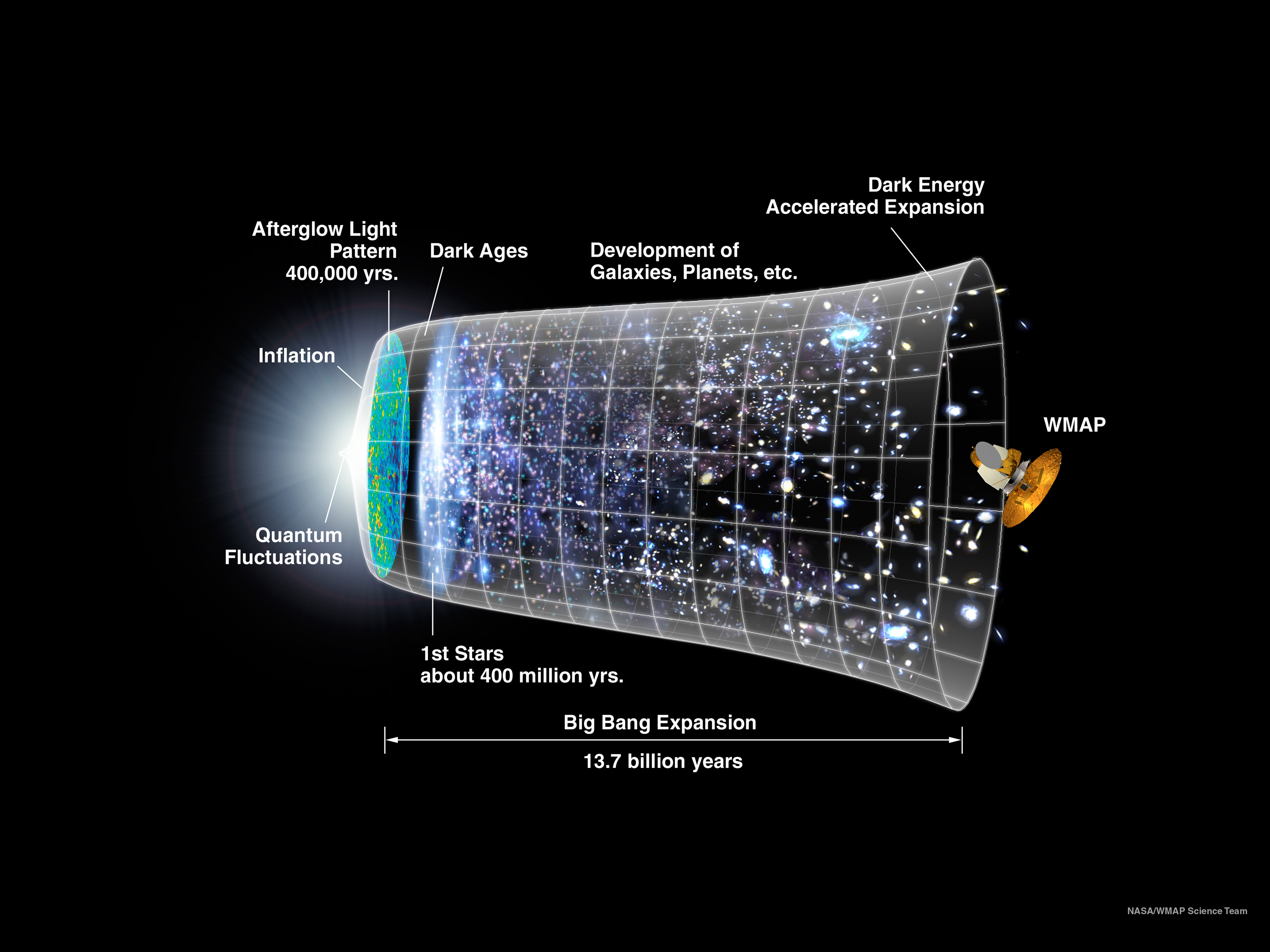What Gravitational Ripples from Big Bang Mean for Physics

The discovery of ripples in space-time from the mysterious earliest moments after the Big Bang is not only a "smoking gun" for the universe's rapid expansion but also could have important implications for physics.
If the landmark finding of these gravitational waves, announced Monday (March 17), is confirmed, it would provide strong evidence that the universe expanded in an extremely rapid burst right after it was born, a process known as cosmic inflation. But the discovery also offers insight into fundamental physics, including, perhaps, the idea that, at one point, most or all of the forces of nature were unified into a single force, scientists say.
The discovery represents "the first real data we have that we can confidently relate to the earliest tiny fraction of a second in the history of the universe," said Sean Carroll, a theoretical physicist at the California Institute of Technology who was not involved in the research.
"It tells us a lot about the dynamics of inflation — what energy it happens at, perhaps how the inflation field evolves with time," Carroll told Live Science. "That will ultimately serve to constrain all sorts of possible ideas about physics at these superhigh energies." [The Search for Gravitational Waves (Gallery)]
The inflating universe
Inflation theory posits that space-time expanded very rapidly beginning just 10^-35 seconds — roughly one trillionth of a trillionth of a trillionth of a second — after the universe formed nearly 14 billion years ago.
The detection of light left over from the Big Bang, known as the cosmic microwave background (CMB), bolstered the theory of inflation. However, this light only began saturating the universe about 380,000 years after the Big Bang, so that was as far back in time as scientists could see.
Get the world’s most fascinating discoveries delivered straight to your inbox.
But hypothesized ripples in space-time known as gravitational waves, whose existence was proposed in 1916 by Albert Einstein, would allow scientists to go back much farther than that — almost all the way back to the universe's birth.
Now, a team led by John Kovac of the Harvard-Smithsonian Center for Astrophysics has detected a signature of gravitational waves in the CMB. The gravitational waves were polarized, just as light waves can be polarized. The potentially monumental discovery was made using the BICEP2 telescope (short for "Background Imaging of Cosmic Extragalactic Polarization") in Antarctica.
Unified forces
Scientists theorize that in the earliest moments of the universe, the forces of nature were joined together as a single force; the unification of all these forces (except gravity) is known as grand unified theory.
The intensity of the gravitational-wave signal the team detected suggested an energy level of about 2 x10^16 gigaelectron volts during inflation. That's a trillion times higher than the energy of the collisions in the Large Hadron Collider at CERN, where the elusive Higgs boson particle — thought to explain how other particles get their mass — was detected. The energies of the newly detected gravitational waves match those predicted by grand unified theory, researchers said.
"We don't know if it's just a coincidence, or if it's telling us something more fundamental," said Uros Seljak, an astrophysicist at the University of California, Berkeley, and Lawrence Berkeley National Laboratory who first proposed measurements of polarized gravitational waves could be used to reconstruct the earliest moments of the universe.
The finding may ultimately make it possible to probe models that attempt to unify all four fundamental forces — including gravity — such as string theory, which holds that the universe is composed of one-dimensional objects called strings. [Twisted Physics: 7 Mind-Blowing Findings]
Quantum gravity
In addition to confirming the inflationary history of the early universe, the findings are the first to show gravity working on the scale of quantum mechanics, known as quantum gravity.
"During inflation, everything was quantum mechanical, including space and time itself," said Brian Keating, a collaborator on BICEP2 who is also one of the principal investigators of the POLARBEAR experiment in Chile, one of the groups that will attempt to confirm the findings. "The violent shuddering of space and time produced these waves of gravity," Keating told Live Science.
The detection of gravitational waves is just the beginning, Seljak said. Now, scientists will attempt to observe them over different fractions of the sky, using both ground-based and space-based telescopes. The BICEP team's discovery, if confirmed, already rules out a number of inflation models. By measuring gravitational waves at these different scales, astronomers will be able to constrain these models even further, he said.
Follow Tanya Lewis on Twitter and Google+. Follow us @livescience, Facebook& Google+. Original article on Live Science.

 Live Science Plus
Live Science Plus






